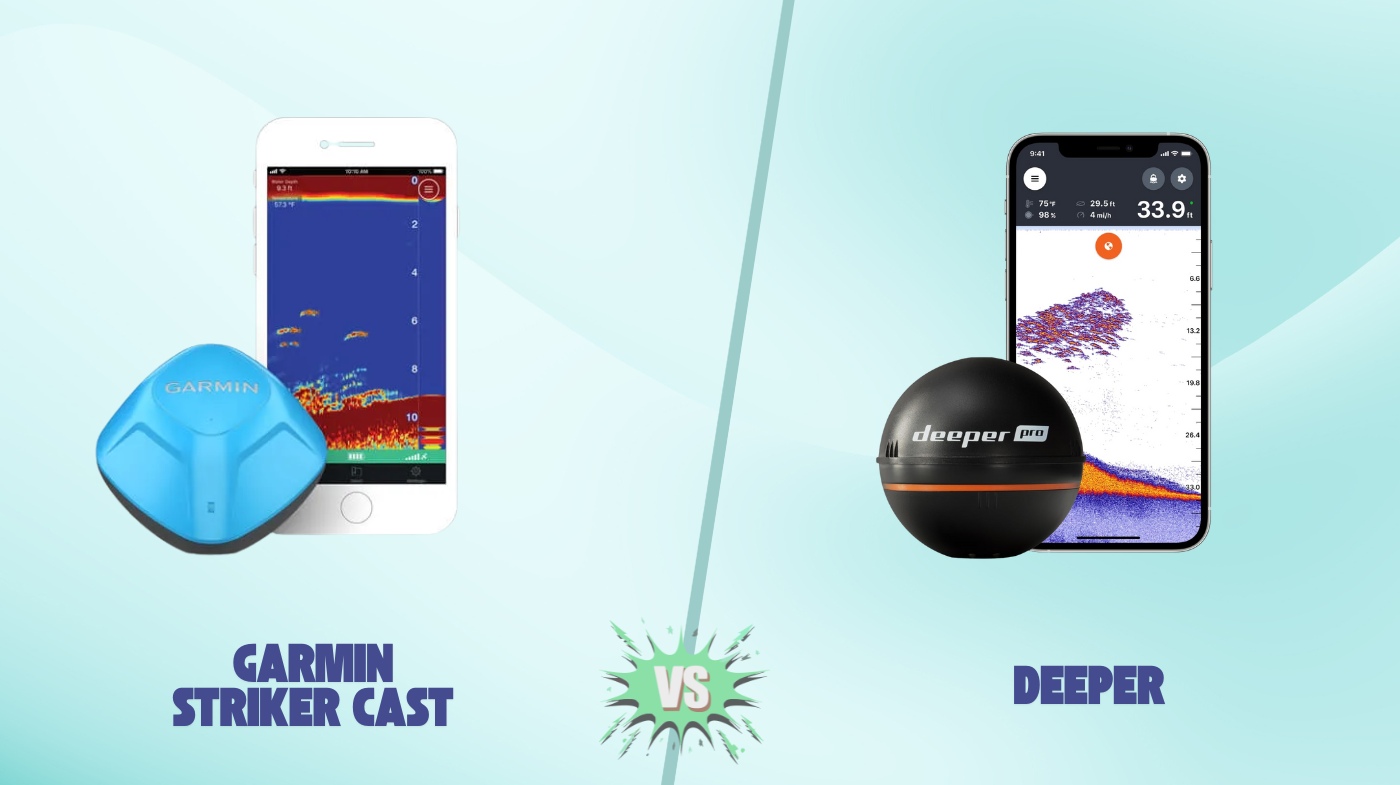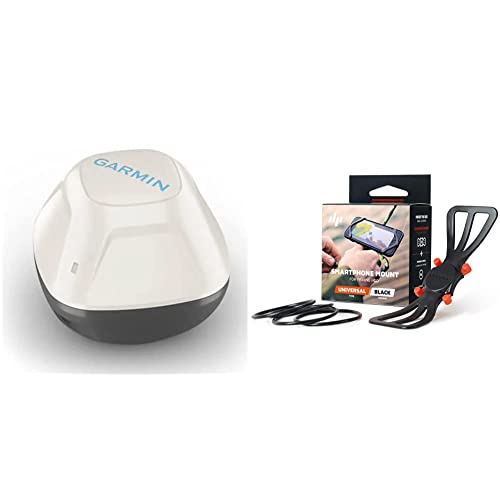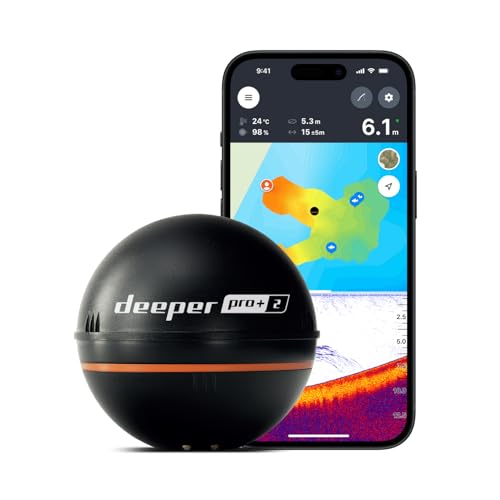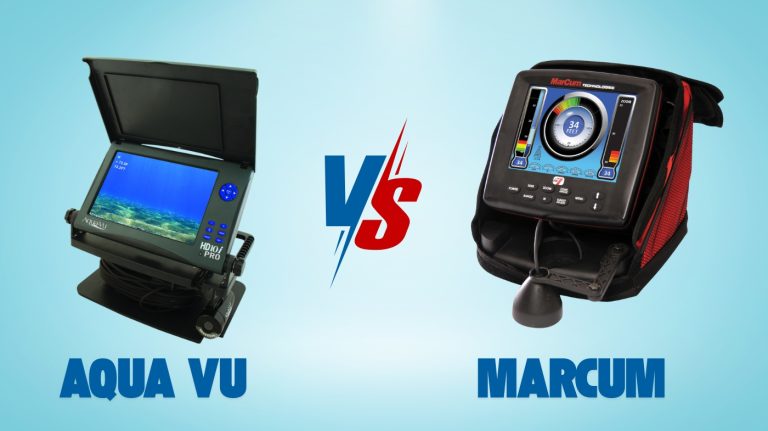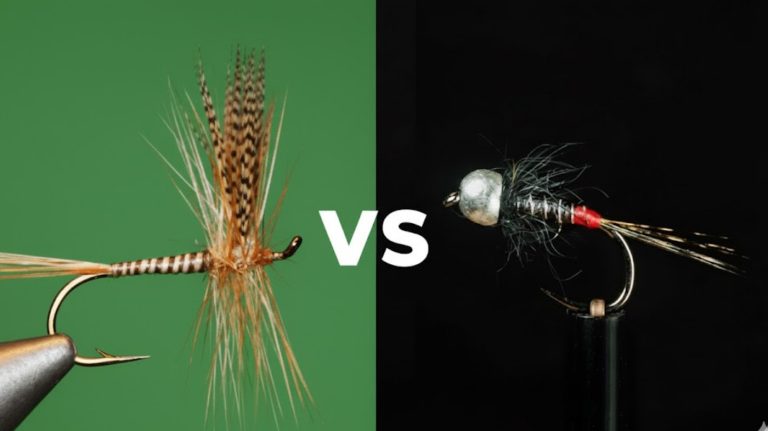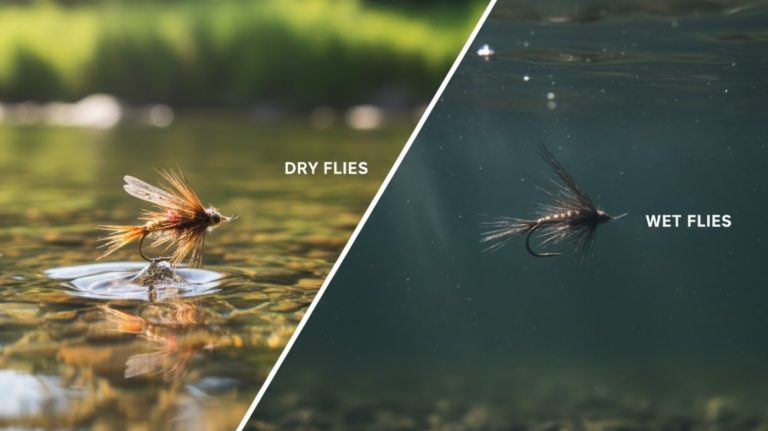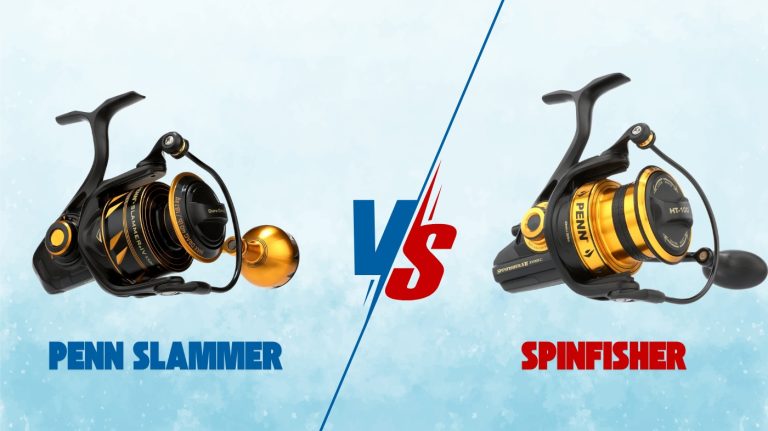Garmin Striker Cast vs Deeper: Which Sonar Wins for Fishing?
If you want compact, Bluetooth sonar with up to 10 hours’ battery life and solid shallow-water detection, Garmin Striker Cast suits you.
But if you need superior target separation, deeper scans up to 100 meters, integrated GPS mapping, and a longer, more stable Wi-Fi connection, Deeper is your pick.
Garmin excels in portability and ice fishing durability, while Deeper shines in detailed imaging and extended range. Keep exploring, and you’ll uncover which matches your fishing style best.
- Rugged, castable sonar device works with the free STRIKER Cast app (compatible with Apple or Android…
- Quick, easy out-of-the-box setup: download the app, pair your mobile device with the STRIKER Cast…
- Traditional 2-D and ice fishing flasher sonar modes stream wirelessly from up to 200’ away with…
- READY TO GO – Easily find where your next catch is hiding with the Deeper START Fish Finder! The…
- SMART TECHNOLOGY – Use innovative, cutting-edge technology to your advantage with our fish finders &…
- SIMPLE AND EFFECTIVE – This phone fish finder has you fishing in minutes! Simply pair with the Fish…
Key Takeaways
- Garmin Striker Cast uses Bluetooth with ~60m range, while Deeper employs Wi-Fi for over 100m stable connectivity and better casting freedom.
- Deeper offers superior sonar target separation and detects about 60% more fish, including smaller and surface fish, than Garmin’s dual-frequency sonar.
- Garmin features a compact, sealed design with longer battery life (~10 hours) and supports a wider temperature range, suitable for ice fishing.
- Deeper includes integrated GPS for autonomous real-time mapping and spot marking, whereas Garmin relies on phone GPS and Quickdraw Contours.
- Price-wise, Garmin balances battery life and sonar performance around $99–$150, while Deeper ranges from budget to premium models with advanced features.
Side-by-Side Comparison of Garmin Striker Cast and Deeper
| Feature | Garmin Striker Cast | Deeper |
|---|---|---|
| Connectivity | Bluetooth (~60m) | Wi-Fi (>100m, stable) |
| Sonar Frequencies | 260 / 455 kHz, 85° beam | 90 / 290 kHz, 70° beam, CHIRP |
| Depth Range | Up to 45m | 30–100m depending on model |
| Target Separation | Moderate | Superior (~0.4″) |
| GPS | Phone GPS or optional | Integrated GPS with spot marking |
| Mapping | Quickdraw Contours, community maps | Real-time mapping with detailed bottom contours |
| Battery Life | ~10 hrs | 6–15 hrs depending on model |
| Charging Time | 1.5–2 hrs | ~1 hr |
| Weight & Size | 2.6 oz, compact 3″ x 3″ x 2.3″ | 100–150g, cylindrical 2.5″ x 3.9″ |
| Waterproofing | IPX7, fully sealed | IPX7, two-part assembly |
| Ease of Use | Simple app interface, short learning curve | Intuitive app, stable Wi-Fi, beginner-friendly |
| Ideal Conditions | Shallow lakes, ponds, ice fishing | Deep waters, shore, kayak, advanced sonar imaging |
Sonar Performance Comparison
While both the Garmin Striker Cast and Deeper sonar devices deliver reliable fish detection, their performance diverges especially in depth range and target resolution.
You’ll notice Garmin scans up to 45 meters, missing shallower fish under 50 cm. In contrast, Deeper reaches deeper—up to 80 meters on Smart Sonar and around 100 meters on CHIRP+—and detects targets as shallow as 30 cm. Monitoring water temperature alongside sonar readings can further optimize fish detection.
Garmin’s 260/455 kHz dual frequencies and wider 85° beam provide broad coverage but less target separation.
Deeper’s 90/290 kHz frequencies with a narrower 70° beam, plus CHIRP technology, deliver superior target separation (~0.4”) and clearer fish signatures. Additionally, the Garmin Striker Cast GPS offers the advantage of creating custom fishing maps through its Quick Draw Contours feature, enhancing strategic planning on the water custom map creation.
Deeper also detects about 60% more fish in identical environments, especially smaller or surface fish.
Both yield high-contrast images, but Deeper’s multi-frequency, multi-beam approach enhances versatility and detailed bottom contour mapping.
Connectivity and Signal Range
Because connectivity technology directly impacts the reliability and usability of castable sonar devices, understanding the differences between Garmin Striker Cast’s Bluetooth and Deeper’s Wi-Fi is essential.
Garmin uses Bluetooth, which offers lower power consumption but shorter wireless range—about 60 meters. It’s prone to interference and intermittent dropouts.
Garmin’s Bluetooth offers lower power use but limited range and can suffer from interference and dropouts.
Deeper’s Wi-Fi connection provides a more stable, consistent data flow and extends connectivity beyond 100 meters, giving you greater casting freedom.
Key differences include:
- Signal range — Deeper’s Wi-Fi outperforms Garmin’s Bluetooth by nearly doubling effective distance.
- Connection stability — Wi-Fi ensures smoother sonar imagery with fewer interruptions.
- Power trade-offs — Bluetooth conserves battery life, while Wi-Fi consumes more energy but enhances signal quality.
GPS Mapping and Navigation Features
Connectivity plays a pivotal role not only in data transmission but also in how effectively you can map and navigate fishing areas.
Garmin Striker Cast leverages your phone’s GPS for spot marking and Quickdraw Contours for real-time bathymetric mapping, yet it lacks built-in GPS unless you choose the GPS variant.
Deeper’s devices come with integrated GPS, enabling independent, continuous mapping and autonomous spot marking. Both update maps in real time, but Deeper’s dual-frequency sonar offers more precise bottom detail.
| Feature | Garmin Striker Cast |
|---|---|
| GPS | Depends on phone (or GPS variant) |
| Spot Marking | Phone GPS dependent |
| Mapping Detail | Quickdraw Contours, community maps |
| Real-time Update | Smooth, app-based |
Deeper excels in standalone GPS mapping and navigation flexibility.
Battery Life and Charging
When choosing between the Garmin Striker Cast and Deeper fish finders, understanding their battery life and charging capabilities is critical for planning longer fishing trips. Choosing the right equipment can be as important as selecting the appropriate rod weight, such as a 5 wt or 6 wt fly rod, to match fishing conditions.
The Striker Cast offers a consistent 10 hours of operation, benefiting from water contact sensors that auto shut off to conserve power.
Deeper’s battery life varies; base models provide about 6 hours, while premium versions reach 15 hours but charge faster, within an hour.
Consider these key differences:
- Battery life: Striker Cast excels over Deeper’s base models but premium Deeper models surpass it.
- Charging time: Deeper devices recharge quicker (≈1 hour) than Garmin (1.5–2 hours).
- Power management: Garmin’s water sensor boosts efficiency. Deeper’s WiFi connectivity can drain the battery faster.
Both require external power banks for extended use, emphasizing effective charging strategy.
Additionally, the Deeper CHIRP 2 model offers up to 15 hrs battery life, making it ideal for all-day fishing excursions.
Device Size, Weight, and Durability
The Garmin Striker Cast really stands out because it’s compact and lightweight. It measures about 3 by 3 by 2.3 inches and weighs only 2.6 ounces.
In comparison, the Deeper models are generally bulkier and heavier. This difference in size and weight can make a noticeable impact when you’re casting or transporting the device. The Striker Cast’s design is also optimized for extended fishing trips, offering over 10 hours of continuous use on a single charge thanks to its internal USB-rechargeable battery long battery life. Its durable construction ensures it can handle the demands of outdoor rigors during fishing.
But no worries! Both models come with solid waterproofing—usually rated at IPX7—and they’re built tough to withstand frequent exposure to water and those rugged outdoor conditions.
Physical Dimensions Comparison
Although both Garmin Striker Cast and Deeper devices serve similar fishing sonar purposes, their physical dimensions reveal distinct design priorities that impact handling and portability.
Garmin Striker Cast measures a compact 3″ x 2.97″ x 2.28″, featuring a block-like, rectangular form factor. Its compact design makes it lightweight and easy to handle during fishing trips. The durability and material quality of the device also contribute to its suitability for rugged fishing environments.
In contrast, Deeper devices are generally longer and slender, with a cylindrical shape around 2.5” diameter by 3.9” length. This difference influences grip and casting dynamics.
Key dimension contrasts include:
- Garmin’s compact volume versus Deeper’s bulkier, elongated body.
- Rectangular shape of Striker Cast aiding secure handling.
- Deeper’s rounded profile enhancing hydrodynamics but less compact for storage.
Weight and Portability
Beyond their physical dimensions, the weight and portability of the Garmin Striker Cast and Deeper devices play a significant role in how you handle and transport them during fishing trips.
The Striker Cast weighs just 2.6 oz (75 g), noticeably lighter than Deeper models, which typically range from 100 to 150 g. This lighter weight enhances your casting ease and reduces arm fatigue over long sessions. Additionally, the Striker Cast offers wireless streaming of sonar data up to 200 feet, which adds to its convenience and portability.
Striker Cast’s compact, spherical design with smooth plastic housing improves grip comfort and casting accuracy.
In contrast, Deeper’s two-piece assembly demands more careful handling and increases setup time. Additionally, Striker Cast’s sealed construction simplifies maintenance.
Bluetooth connectivity further supports portability by eliminating cables, while Deeper’s Wi-Fi setup adds size and power demands.
Waterproofing and Build Quality
When evaluating waterproofing and build quality, the Garmin Striker Cast stands out with its completely sealed, screw-free design that prevents water ingress and alignment issues common in Deeper’s two-part assembly. This design also helps maintain depth perception accuracy by ensuring stable sensor positioning.
Its IPX7 rating lets you submerge it up to 1 meter for 30 minutes without worry, while Deeper’s hemispherical design demands careful sealing to avoid leaks.
The Striker Cast’s compact 3 x 2.97 x 2.28-inch size and 75g weight simplify casting and increase durability by reducing mechanical failure points.
Consider these advantages:
- Monolithic construction resists impact and immersion better than Deeper’s joined parts.
- Wider operational temperature range (-4°F to 140°F) supports ice fishing.
- Water contact sensor powers down the unit out of water, extending lifespan.
- Additionally, the Garmin device’s lighter weight enhances portability, making it ideal for anglers prioritizing ease of transport and use.
Pricing and Value Analysis
Since pricing plays a critical role in choosing between the Garmin Striker Cast and Deeper fish finders, understanding their cost structures and feature sets is essential.
Garmin Striker Cast typically ranges from $99 to $150, offering up to 10 hours of battery life with efficient auto shutoff and Bluetooth connectivity within 200 ft. It also features a built-in GPS that supports the creation of Quickdraw maps with 1-foot contours, enhancing mapping precision. Choosing the right device also depends on optimizing equipment compatibility to match your fishing style and conditions.
In contrast, Deeper’s lineup varies from $89 for entry-level START to $180-$200 for advanced CHIRP models featuring multi-frequency sonar and WiFi connectivity.
While Deeper’s higher-end units provide superior mapping and target separation, Garmin balances sonar performance and battery longevity for a budget-friendly option.
Durability and warranty factors also influence value; Deeper emphasizes ruggedness for shore anglers, whereas Garmin maintains quality with slightly less robust materials.
Ultimately, Garmin delivers strong price-to-performance, while Deeper demands a premium for advanced tech and extended features.
User Experience and Ease of Use
Although both the Garmin Striker Cast and Deeper fish finders offer mobile app integration, their user experiences diverge markedly, especially in interface design, sonar data presentation, and connection stability.
Both Garmin Striker Cast and Deeper integrate with mobile apps but differ greatly in usability and connection quality.
You’ll find Garmin’s Bluetooth connection somewhat limited in range and less stable compared to Deeper’s robust Wi-Fi link. The Striker Cast app is straightforward but demands practice to interpret sonar data accurately. Additionally, the Striker Cast relies on Bluetooth connectivity which can impact the overall user experience depending on your phone’s compatibility. Its reliance on Bluetooth can also affect the connection stability under certain fishing conditions.
In contrast, Deeper’s app excels in clarity and responsiveness, making it ideal for beginners.
Key differences include:
- Connection: Garmin uses Bluetooth; Deeper uses Wi-Fi for faster, more reliable data transfer.
- Sonar Visualization: Garmin shows detailed bottom maps but detects fewer fish near the surface; Deeper offers clearer, abundant fish images.
- User Interface: Deeper’s app provides intuitive navigation and quick settings adjustments, reducing your learning curve significantly.
Ideal Fishing Scenarios for Each Device
When it comes to fishing, the Garmin Striker Cast really shines in calm, shallow waters like lakes and ponds. It’s super portable, making it easy to take along, and it allows for quick waypoint marking, which is a huge plus for those spontaneous fishing trips. Its user-friendly interface makes it accessible even for beginners who are new to sonar technology. Additionally, the device performs best in environments where water temperature is moderate, enhancing lure action and fish activity.
On the flip side, if you’re heading out to deeper, larger bodies of water, the Deeper device is definitely the way to go. It’s got advanced sonar imaging and a broader scanning range, which means you can cover more ground and get a better understanding of what’s beneath the surface.
So, really, the choice boils down to what you value more. If you prefer something lightweight and straightforward, the Garmin Striker Cast is your best bet. But if you’re after extensive mapping and detailed sonar capabilities, then the Deeper device is the clear winner.
Best Conditions for Garmin
When fishing from the bank, kayak, or ice, the Garmin Striker Cast excels by offering precise sonar imaging tailored for small to medium freshwater bodies like ponds and streams. Its portability benefits from impact-resistant storage options that protect the device during outdoor activities.
You’ll appreciate its CHIRP sonar that works best in calm waters up to 150 feet deep, providing detailed views of underwater structures.
Its 20-degree cone efficiently scans shallow to mid-depth zones, ideal for targeting brush piles or ledges.
The device’s Bluetooth connection ensures seamless data transfer within 200 feet, perfect for close-range fishing.
Key conditions to maximize Garmin Striker Cast:
- Calm or mildly flowing freshwater environments.
- Slow towing speeds below 5 mph or static casting.
- Usage on bank, kayak, or ice where portability and smartphone integration matter most.
Additionally, the unit powers on and off automatically through water contact activation, conserving battery life during fishing sessions. Proper storage and maintenance, including regular cleaning, help ensure device longevity and reliable performance.
When to Choose Deeper?
Since each fish finder excels under specific conditions, choosing the Deeper device makes the most sense if you prioritize shore or bank fishing without boat access, especially in shallow waters.
Its castable range up to 50 meters and wide 40° sonar beam deliver broad coverage, enabling quick location of fish, vegetation, and bottom contours from shore or piers.
You’ll appreciate the Wi-Fi connection for stable, real-time data on your smartphone, showing fish size, depth, and underwater structures.
Deeper’s ability to differentiate vegetation, brush piles, rocks, and bottom hardness helps you target species like bass near cover.
Plus, its portability suits kayak or handheld use, and advanced sonar modes let you analyze subtle bottom features.
Since sonars scan in cones rather than straight lines, the wide beam angle of the Deeper provides a larger coverage area especially useful for scanning from shore.
If you value detailed habitat insights and mobility without complex installations, Deeper is your ideal choice.
Frequently Asked Questions
Are Replacement Parts or Accessories Readily Available for Both Devices?
Yes, you’ll find replacement parts and accessories for both devices, but availability varies.
Garmin offers a wider range of parts like transducer mounts and trolling motor kits through official and third-party sellers, making replacements easier and more diverse.
Deeper’s accessories focus more on charging docks and protective cases, mostly sold online.
Garmin’s parts tend to be more complex but accessible, while Deeper’s simpler components emphasize wireless connectivity and battery replacement.
Can Either Device Be Used Effectively Through Ice Fishing Holes?
You can confidently use both devices through ice fishing holes up to about eight inches thick without sonar interference.
The Garmin Striker Cast offers a specialized ice flasher mode and stable CHIRP sonar, ideal for jigging.
Deeper units provide similar ice flasher views and accurate bottom contour mapping.
Both rely on smartphone apps, so your phone’s display quality affects clarity.
Garmin excels in contour mapping, but Deeper may offer more model variety for ice fishing.
Do These Devices Support Multiple User Profiles or Settings?
Neither device supports multiple active user profiles directly on the sonar hardware.
You’ll manage settings through their mobile apps, each tied to a single user account.
Garmin Striker Cast connects to one device at a time, limiting simultaneous multi-user access, while Deeper requires manual app logins to switch users.
Both store preferences per app account, so sharing means logging out and in again.
Real-time profile switching isn’t available on either.
How Do Firmware Updates and App Compatibility Compare Over Time?
You’ll find both Garmin Striker Cast and Deeper offer regular firmware updates via their apps, improving sonar performance and adding features.
Garmin requires 50% battery and a Garmin account, focusing on ecosystem integration.
Deeper emphasizes Wi-Fi and Bluetooth connectivity and user feedback for app enhancements.
Both apps maintain compatibility with evolving mobile OS versions.
Garmin’s updates align tightly with broader marine products, whereas Deeper prioritizes fishing modes and visualization advancements.
Find the Perfect Fit for Your Fishing Adventures
When choosing between the Garmin Striker Cast and Deeper, don’t worry about sacrificing performance for portability. The Striker Cast offers precise sonar and integrated GPS directly on your phone.
Meanwhile, Deeper excels with casting versatility and longer signal range. Both deliver solid battery life and durable builds, but your ideal pick depends on how you fish: shoreline or boat. Visualize a split screen: Striker’s detailed mapped data versus Deeper’s expansive, castable sonar coverage.
- Rugged, castable Garmin sonar device works with free app to locate fish up to 200′ away and display…
- Deeper mount allows monitoring sonar data on smartphone while keeping hands free to reel in catch.
- Garmin sonar performs well in shallow and deep, fresh and salt water, even below ice.
- READY TO PERFORM: Wide beam, mid, and narrow beams make covering large expanses or drilling down on…
- SMART TECHNOLOGY: Accuracy at up to 330 ft; Own dependable Wi-Fi with rock solid connectivity
- PINPOINT ACCURACY: Displays unerring accuracy in the water; Target separation of 0.4 in (narrow…
Last update on 2025-11-29 / Affiliate links / Images from Amazon Product Advertising API

